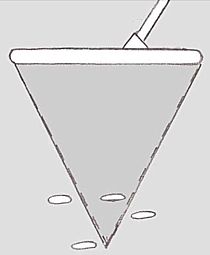Dan Hughes
Sr. Member

Everybody tells you you'll find more if you slow down. But slow down what?
Your swing speed? Your walking speed?
This program gives you a step-by-step procedure for determining the proper swing speed for your standard-coil detector, and it also tells you the secret of getting a beep from the deepest coins your detector is capable of finding.
Listen at http://thetreasurecorner.com.
P.S. How many of those coins in the drawing would YOU find?
Dan Hughes, http://treasuremanual.com





